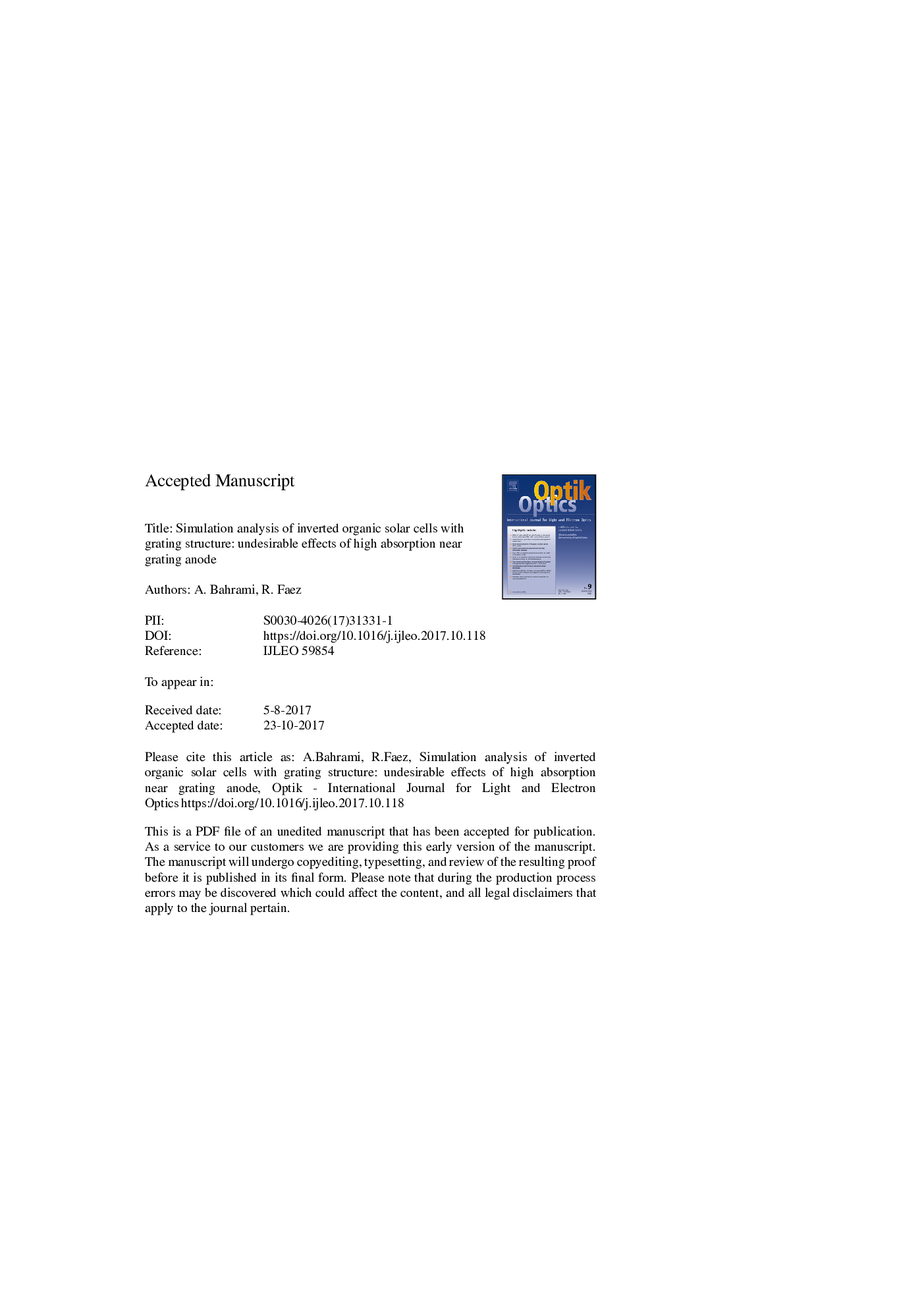| Article ID | Journal | Published Year | Pages | File Type |
|---|---|---|---|---|
| 7225331 | Optik - International Journal for Light and Electron Optics | 2018 | 10 Pages |
Abstract
An inverted organic solar cell (IOSC) with nanograting array as anode of the cell has been simulated and analyzed using a combined electrical and optical approach. We have used finite difference time domain (FDTD) method for optimizing device structure. We have compared the characteristics of the IOSC with grating structure with a reference IOSC without grating structure. As a result, an improvement of 11% and 26% in power conversion efficiency (PCE) and short circuit current (JSC) compared to the reference structure was achieved. An analysis is provided on the origin of reduced fill factor (FF) in the IOSC with grating structure. We also have discussed about disadvantage of using optical approaches for optimization of the device structure and the need for coupled electrical-optical approaches to achieve more accurate results.
Related Topics
Physical Sciences and Engineering
Engineering
Engineering (General)
Authors
A. Bahrami, R. Faez,
